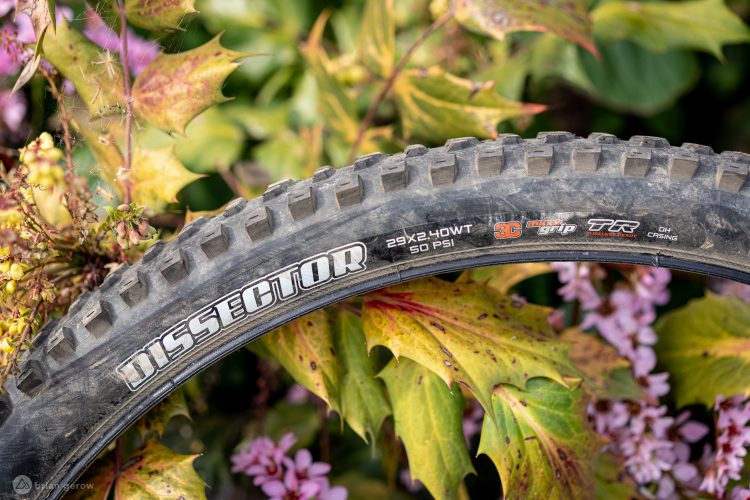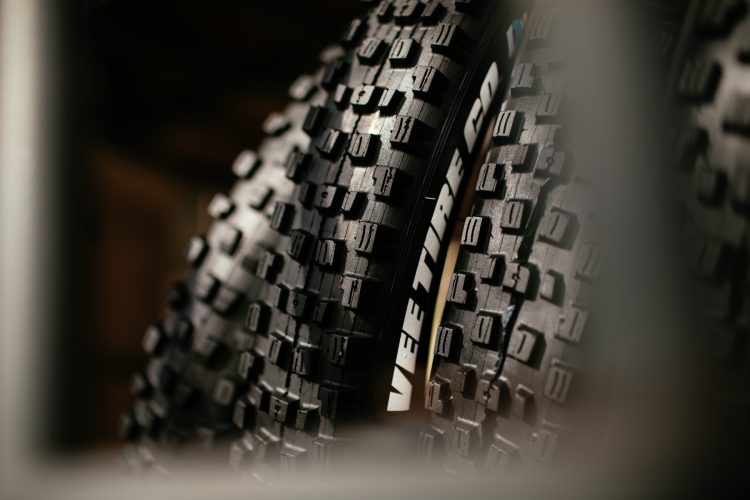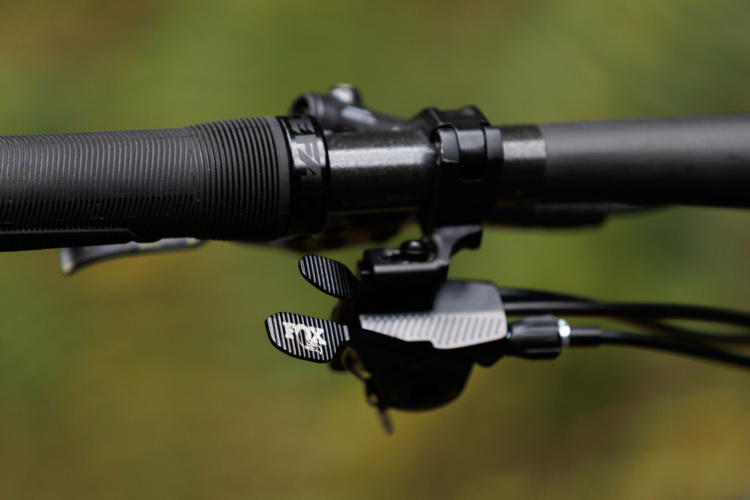
No, this is not an April Fools prank. It’s an actual review of the 2nd Generation Maxxis Shorty 29 MTB tire that’s designed for the loosest and sloppiest trail conditions. The new Maxxis Shorty tread was released in February, and I started riding it in the rain a month or so prior. As the clouds receded I switched to a Dissector rear tire, keeping the Shorty up front to see how it would do in the dust.
In lieu of a massive review that digs into every puncture-protecting layer, this one will focus specifically on the second-generation Shorty tread pattern, and how it performs in its naturally sloppy environment. We have detailed the benchmark performance of Maxxis gravity casings in several other tire reviews, leaving us to focus on grip while you select the puncture protection that’s right for your local trails.
I’ll only say that the DH casing performed as impressively as ever, providing maximum sidewall support with zero punctures and very little air loss between rides. If you like it rough, this double-ply carcass will keep that spare tube taped to your frame.

Maxxis Shorty Tread
Sloppy mud and deep dust oddly share some important traction needs. Both require well-spaced spikes that dig in deep for a mechanical connection to the earth below, and a narrow enough profile so that the tire can bite rather than float on the less stable mud or powder. Muddy conditions call for wide spacing between lugs so the soaked dirt can spin free before the tread contacts the ground again, whereas that same spacing lets the lugs dig past the dust to a more solid foundation.
The slightly narrower 2.4″ casing also makes room for for any mud that sticks to the tire to pass through the frame, where a wider tire might be stopped as the frame clogs. For these reasons, and to keep the tire’s weight reasonable, the Maxxis Shorty only comes in a 2.4″ width.

On the Trail
The Maxxis Shorty 29 Gen 2 sees the central braking blocks split wide for even better mud clearance and soil clawing capability. Given the tread’s mid-height lugs those separated bars don’t seem to affect braking performance much, and the Shorty will still slow things down on steep and loose trails with the best of them.
Braking bite is as predictable as a tire can be in loose conditions, and after skidding or sliding it catches grip again quite well. When you look down a slippery fall-line and think “is there any way to scrub speed here” the Shorty tread is one of the few tires that might answer “yes”.
All of that mud clearing prowess allows the soft MaxxGrip compound to find purchase on wet stones and sticks. Compared to the Onza Porcupine RC that I test on a lot of the same soaked trails, the Maxxis Shorty has a bit better hold on hard surfaces once the mud is cleared, and both tires clear mud similarly.
In terms of sheer grip, I would compare the MaxxGrip to the purple Schwalbe Addix Ultra Soft compound, the newer Michelin MagiX-DH, or the spankin’ new T9 rubber from Specialized. While you still won’t want to make any sudden movements on wet surfaces, the MaxxGrip compound will hold a line where other tires ping and pong. That grip could be the difference between having to ride the lowest line that you slide into or the high one where you can carry more speed and open up that next turn.

Cornering and off-camber connection are somewhat linked with this tread, as the aggressive shoulder lugs are poised to bite hard into turns and tilts that lack a berm. The sharp shoulders dig in well on looser off-camber tracks, and this would be my go-to tire for most shoulder season enduro racing. I expected the wide spacing between lugs to cause the occasional slide, but I’ve been pleasantly surprised that Maxxis dialed in the gaps just right to maintain grip. The taller shoulder knobs do start to feel a little squirmy on super hard-packed clay, which is fine since that’s essentially the opposite of what they’re made for. In looser off-camber soils and flat turns the Shorty is a gravity go-to.

Conclusion
If you ride in deep mud or billowing dust, you’re most likely a committed mountain biker with some level of fitness. A pair of Maxxis Shorty Gen 2 tires will not be the best for climbing and long valley-floor rides, as they are heavy and take some work to get rolling.
However, folks who are buying these Maxxis mtb tires are prepared to go ride no matter how hard the going is, and they will be handsomely rewarded on the fast and loose bits. At just 1286g for the toughest and grippiest 29″ model, they are a fair bit lighter than a similarly-spiked Michelin DH22.
Still not joking about or fooling anyone, this tire is fantastic for all things mud, dust, and deep loam. I spent a season in the Pacific Northwest with the first generation shorty mounted up front and it performed well in the loose alpine soils around Mt. Hood and Mt. St. Helens. Depending on your local tracks it can certainly work as a daily driver.
- Price: about $50-90 depending on size and construction
- Available at Jenson USA and other retailers




















0 Comments